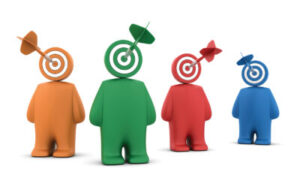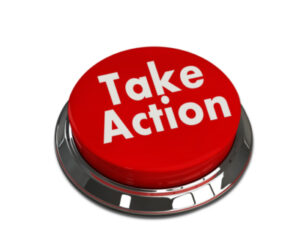We all know that feeling that comes before we make a purchase.
Even when we really want something, when it comes to the moment where we need to actually hand over the cash there is a bit of “pain” that most people feel.
This is known as the “pain of payment”. This feeling could be caused by feelings of buyer’s remorse that we have experienced in the past and which we don’t want to experience again. Or it could be that we are weighing up our lost opportunity costs associated with making this purchase. According to recent studies from the field of neuro-marketing, paying for items activates the part of the brain associated with processing pain!
Whatever the reason, this feeling of “pain” can stop us from making purchases and handing over our cash. As marketers, we want to remove all obstacles that may prevent our customers from making a purchase.
Is there a way to remove the pain of payment? And will that lead to our customers being willing to spend more money, more frequently?
Paying by card reduces the pain of payment
In 2001 MIT professors Drazen Prelac and Duncan Simester conducted a study to find out if paying by card was less “painful” than paying by cash.
They conducted a study where 64 students were asked to participate in an auction for a pair of basketball tickets. Half the students were asked to place their bids with credit cards, and the other half were asked to place their bids with cash. When the results came in they showed that the students who paid by card made an average bid of $61 vs only $29 for those who were asked to bid with cash.
They repeated the experiment with another auction for a lower-priced item of basketball memorabilia, and the results were exactly the same. Those who were asked to bid by card placed significantly higher bids than those who bid with cash.
Prelac and Simester concluded that paying by card dulls the pain of payment which allows people to spend more.
Why does this make a difference?
The two psychologists suggest that paying by card makes the transaction of money less salient or noticeable. When you pay by cash you hand over physical notes or coins and may or may not get any change back. It’s a more tangible exchange – you had some money in your possession and now it’s gone.
When you pay by card you hand your card over, the transaction is processed and then your card is handed back to you. You don’t notice any loss. The pain associated with making a payment is diminished or reduced because of this.
Think about contactless payments and how this has further reduced the pain of payment – one simple tap and the payment is made, it literally happens in seconds. It’s a frictionless experience and because there is no money handed over it makes people feel less guilty about the purchase.
This phenomenon may explain why people find it easier to spend more money online than they do in brick-and-mortar stores.
Things you can do to reduce the pain of payment
1. Allow customers to save their payment details
Make paying for goods easy for your customers by allowing them to save their card or payment details on their account with your store.
This will enable them to select their goods, add to their cart, and then pay without having to even think about their card details. The more you can distance the payment process from the physical symbols of money such as cash or credit cards, the better your customers will feel when it comes to making the payment.
Amazon does this very well and even has their “one-click purchase” option which further helps to reduce the pain associated with making a payment.
2. Remove the $ sign from your price list
You may have noticed that quite a few restaurants have removed currency signs from their menu prices. So instead of showing their prices as $9.99 they simply show them as 9.99.
This is another way in which to reduce the pain of payment. A study conducted by the Cornell Center for Hospitality Research showed that removing the dollar sign from menus increased sales by 8%.
You can take advantage of this by removing the currency symbol from your price list or relevant website pages.
3. Diminish the price
You can also make a payment seem less significant by diminishing the price. You do this by comparing your price to a smaller and less significant purchase.
Example: “For less than the price of a cup of coffee a day…..”
By comparing your price to the cost of a commodity like coffee, you are re-framing your customer’s perception of the price of your product and making it look much more affordable and reasonable.
This is a strategy you see quite often when it comes to subscription-based services but it can be used for any sort of product or service.
4. Allow contact-less payments
If you run an offline business then you should be adopting contactless payments if you haven’t already done so.
As we’ve already seen, paying by card is a lot less “painful” than paying by cash. By allowing for contactless card payments this payment pain is further reduced. The more you can make your payment process feel less like a cash transaction the less painful it will be.
5. Use charm pricing
Charm prices typically end in odd numbers like $4.99 as opposed to a rounded number like $5.00. Even though there is only a 1c difference in the price, the $4.99 seems to represent better value than $5.
There are various explanations for this.
One is that we read from left to right, so we place more emphasis on the first figure than the last. This makes $4.99 seem a whole lot less than $5.00, even though there is only a one-cent difference.
Another explanation is because charm prices have been used for a long time now, we naturally associate them with sales, bargains, or better value.
Although various research studies have shown that items priced with charm prices sell more compared to when they are priced at a more rounded amount, a lot of businesses still do not use this strategy.
Conclusion
So there you have a few ways in which you can reduce the pain of making payments for your customers. When you do so you may start to see an increase in your conversion rates or sales. Test what works for your products and market.
If you are in the luxury goods market your customers will be less price sensitive, so use some common sense and take the approach that works best for you.
Not sure how to price your products or services?
Find out about different pricing strategies you can use here – Pricing Strategies – How to price a product.




